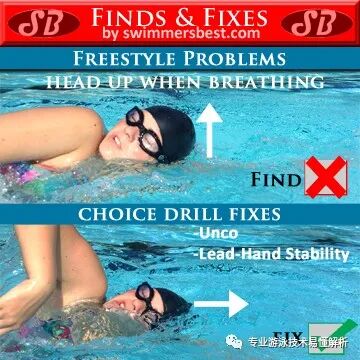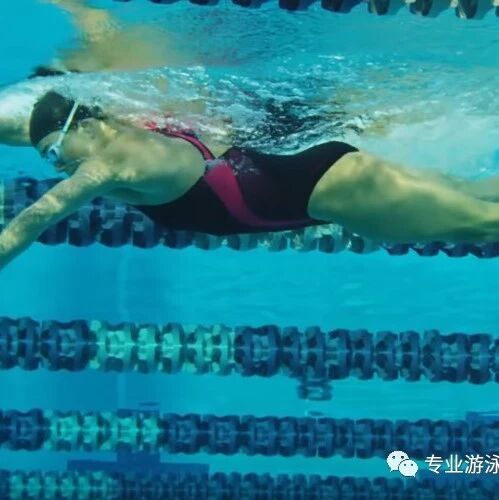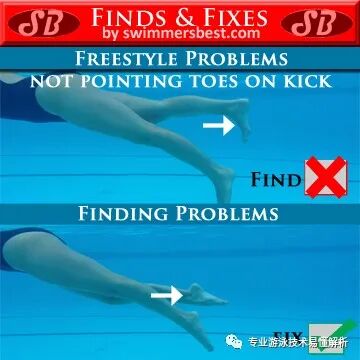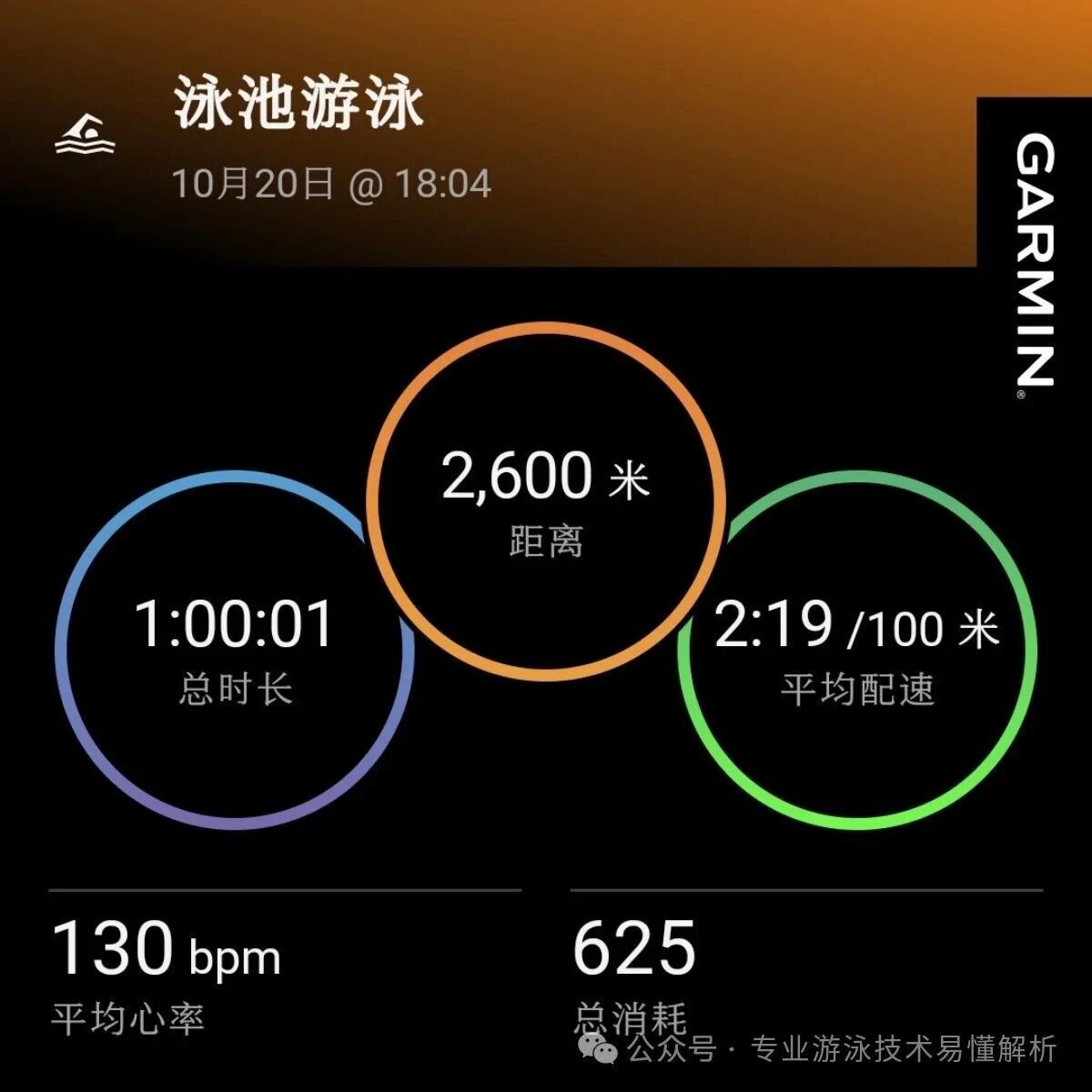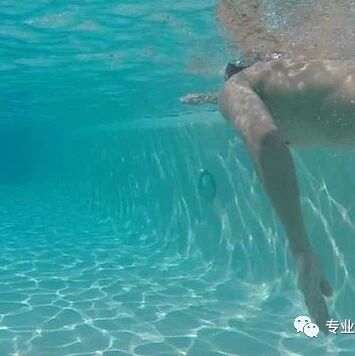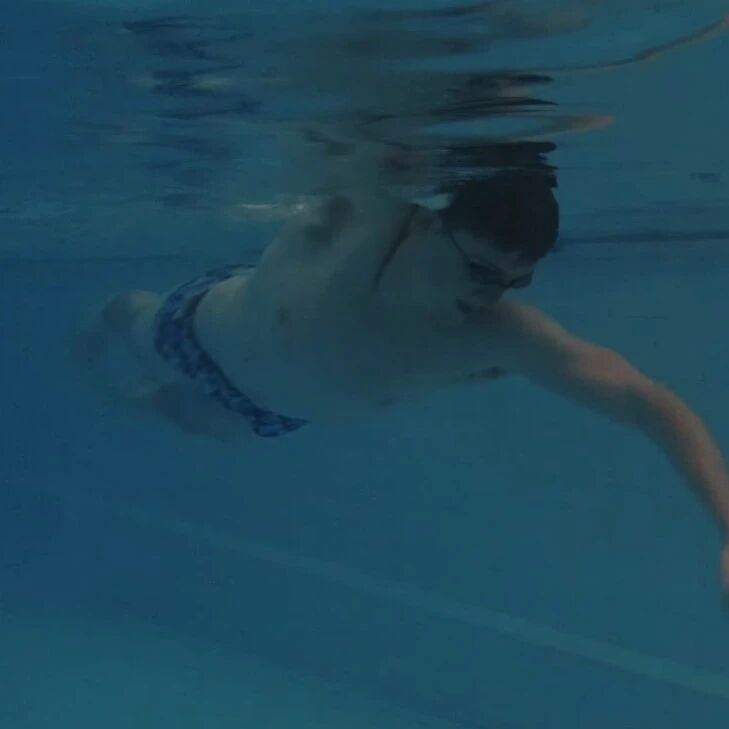Compared to breaststroke, which is easy to learn but hard to master, the learning curve for freestyle is much smoother. Clear and concise guidelines already exist for the fundamental techniques of freestyle, leaving you with just one thing to focus on: consistent practice and continuous improvement—refining your breathing for greater ease, honing your strokes to become stronger and more fluid, and ultimately achieving a dynamic, graceful swimming rhythm.
During this practice process, both beginners and swimmers with some freestyle experience may unknowingly develop subtle yet common technique flaws. This article highlights these mistakes—and offers practical solutions to help you refine your form. To assist you further, we’ve included well-defined visual examples of incorrect movements. If anything remains unclear, feel free to leave a comment below so we can address it together!
Question 1: Arm dragging the elbow upon entering the water
Analysis: Extending the arms excessively forward before entering the water causes the elbows to enter first, ahead of the palms.
Correction: When entering the water, keep your elbows pointing toward the sky, with your forearms and palms relaxed. As you feel gravity pulling you downward, smoothly enter the water at an angle of approximately 15 to 25 degrees.
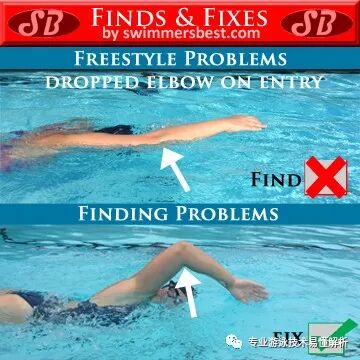
Question 2: Overextending the arms forward upon entering the water
Analysis: Extending the arms straight forward before entering the water eliminates their hydrodynamic effect, removes their ability to streamline the body, and also increases the risk of shoulder injuries.
Correction: Only after the arm enters the water at a sharp angle—and as you push through the water—can the arm fully extend forward while simultaneously moving it further ahead. This coordinated motion ensures a smoother, more fluid swimming rhythm, and should not be interpreted simply as the arm straightening upon entry into the water.
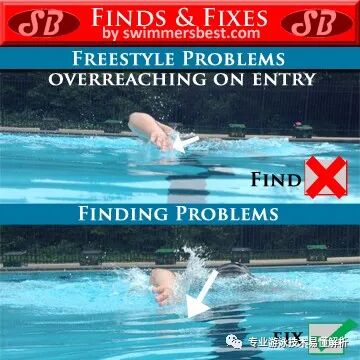
Question 3: Arm-Reach-and-Push Water
Analysis: When pushing the water with straight arms, the distance between the point of force application and the shoulder is longer—resulting in a greater torque. This places excessive stress on the shoulder, making injury to the shoulder joint almost inevitable.
Correction: It is not recommended to push the water with straight arms; instead, other techniques should be used, primarily to shorten the lever arm and prevent shoulder injuries. Generally, pushing the water with a bent-arm, high-elbow technique is advised.
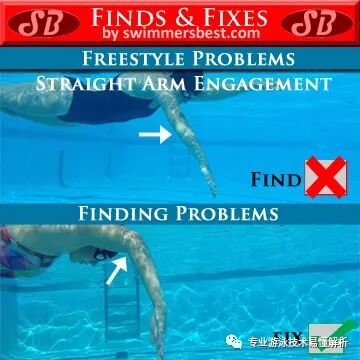
Question 4: Elbow dragging occurs when holding the water.
Analysis: When performing the catch phase, swimmers often mistakenly place their arm’s point of force on the palm instead of maintaining proper elbow positioning at a higher elevation. This mistake frequently leads to elbow drag during the catch, a common issue among freestyle learners.
Correction: When performing the catch, place your arm's point of force on your forearm—just slightly above the wrist joint—and keep your fingers relaxed yet gently curled together, avoiding any unnecessary tension or gripping. During the catch, make sure not to pull your elbow forcefully backward; instead, use your elbow as a pivot point and let your forearm naturally sweep backward through the water.
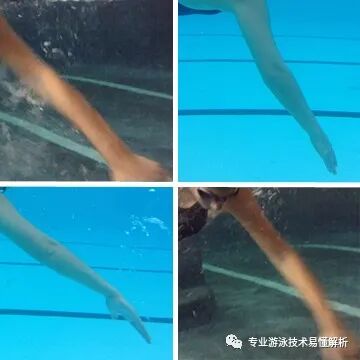
Question 5: Pushing the water incompletely causes the arm to exit the water prematurely.
Analysis: The swimmer tends to rush the arm recovery and immediately initiate the next pull, while also failing to push water directly backward—instead, the motion is slightly outward. This results in an incomplete or inefficient pull-through. Unfortunately, this issue is quite common. As the effective pulling distance decreases, the timing for breathing becomes shorter as well. Not only does this compromise the efficiency of the pull, but it also leads to weaker breathing mechanics.
Correction: Some swimmers appear to have trouble with their breathing because they don’t take enough time to breathe—this, in turn, happens when their pull-through motion isn’t fully executed. Therefore, as you push the water straight backward during the recovery phase, deliberately steer your hand slightly inward toward your body, moving it closer to your torso. Specifically, guide your palm toward the base of your thigh before bringing it back up out of the water.

Question 6: Keeping the elbow tucked in while scooping waterAnalysis: Many swimmers focus heavily on pushing the water, pulling the arm through the water, and entering the water, but often pay insufficient attention to the "catch" phase—particularly the transition from the forward reach to the catch itself. This is a critical stage where swimmers tend to inadvertently push the water downward with their entire arms.Correction: After the arm enters the water, extend it fully and keep it parallel to the water’s surface. When you initiate the catch phase, remember to stabilize your elbow joint—lead with your forearm as you press downward into the water, followed by your wrist joint, which should turn downward ahead of the forearm. Finally, your palm presses firmly against the water.
This subtle adjustment transforms the original motion of pressing the entire arm downward into a more efficient sequence: first the palm, then the forearm, and finally the upper arm, folding downward layer by layer. This refined movement creates a powerful and effective catch-and-pull action.
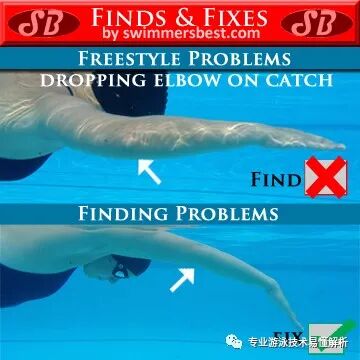
Question 7: Sculling the water with the soles of your feet during kickingAnalysis: When performing the flutter kick in freestyle, the ankle joint should remain relaxed. However, since adult ankles tend to be stiffer, it’s important to consciously straighten the foot rather than letting it naturally fall into a 90-degree angle in the water—this prevents the "sculling" issue.Correction: In freestyle swimming, the kicking motion essentially involves pushing water with the tops of your feet—or, more precisely, pressing the soles downward. Because the top of the foot forms a sloping surface, part of the downward force is redirected into a propulsive action, which is precisely how the kicking motion generates significant propulsion.
Question 8: Insufficient range of lateral body rotationAnalysis: The body's lateral rotation isn’t just about ensuring a smooth arm recovery—it’s a crucial movement that integrates the forces generated during freestyle swimming. By rotating laterally, the lower body’s kicking action and the upper body’s arm strokes can work together more effectively, creating a harmonious, coordinated motion that propels the swimmer forward with maximum efficiency.Correction: If you feel tension in your back as your arm recovers, it means your body rotation is too limited, leading to improper arm recovery. On the other hand, when your forearm naturally relaxes and drops slightly as your arm exits the water during recovery, with your fingers remaining just above the surface and gliding smoothly across it, this indicates that your body rotation is sufficient.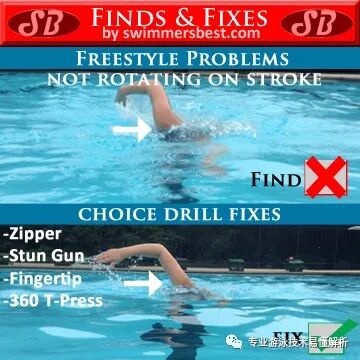
Question 9: The pushing arm crosses the body's centerline.Analysis: The arm's pull-through path is directly backward, with the entire line positioned just beneath the sides of the body. The alternating left and right pull-through lines remain symmetrically aligned on either side of the body’s midline—crucially, they must not cross this central axis. This common error typically occurs during the body’s lateral rotation.Correction: When pushing the water with your arms, make sure to maintain proper elbow joint positioning. If the elbow joint stays aligned and doesn’t drift off course, the pushing arm won’t cross over the body’s centerline. The key lies in keeping the elbow joint relatively stable throughout the entire propulsion phase.
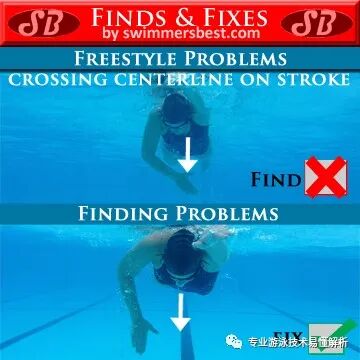
Question 10: The calf lifts independently during the kicking motion.Analysis: In freestyle kicking, the entire leg is engaged—you can’t rely solely on the calf to generate propulsion. When lifting the leg upward, it’s the full leg that rises, with a slight but deliberate effort from the thigh. As you drive the kick downward, it’s the entire leg working together: first, the thigh pushes forcefully downward, initiating the motion, which then smoothly transfers to the calf and finally propels the foot through the water.Correction: When practicing the kick, focus your attention on the root of your thighs rather than your calves. The bending of your knees should occur naturally and passively after the kick, rather than being actively forced by muscular effort.
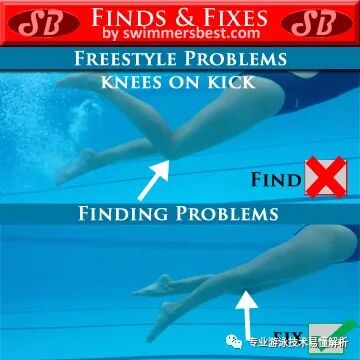
Question 11: Hip position too lowAnalysis: When swimming without consciously engaging your core muscles and neglecting proper hip movement techniques, it becomes difficult to keep your hips as close to the water’s surface as possible—or in other words, maintaining a high hip position becomes challenging.Correction: Maintaining a high hip position is a clear indicator of swimming proficiency in any stroke, serving as a key to effortless and efficient swimming. During the freestyle swim, in addition to engaging the core muscles, actively rotating the hips to activate the gluteal muscles is essential for further enhancing freestyle speed.

Question 12: Insufficient Head Stability
Analysis: Lifting your head during breathing is an instinctive reaction common among beginners. To master this, you need to learn how to relax your neck and synchronize the movement of your head with your body’s side turn. When breathing, keep your head relaxed—avoid lifting it upward or deliberately pressing it downward.
Correction: Rest your head on the shoulder of your forward-reaching arm. Instead of actively lifting your arm to support your head, continue maintaining the forward extension motion while keeping it steady. As your head relaxes, it will naturally settle onto the shoulder of your extended arm.
